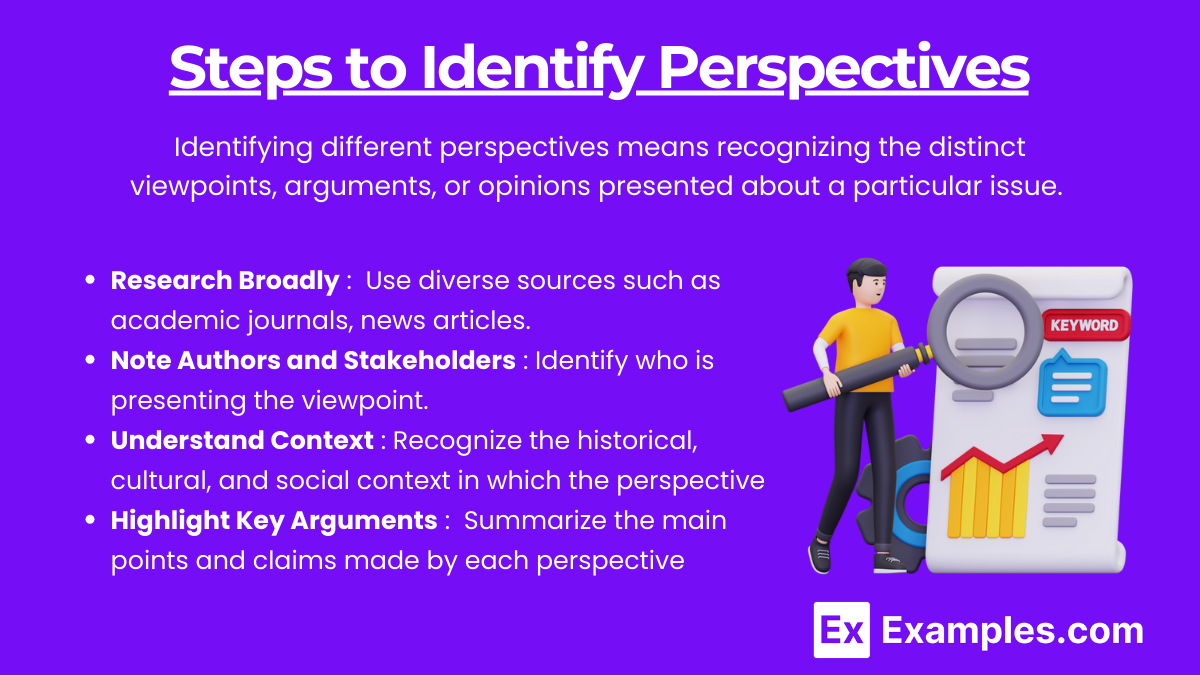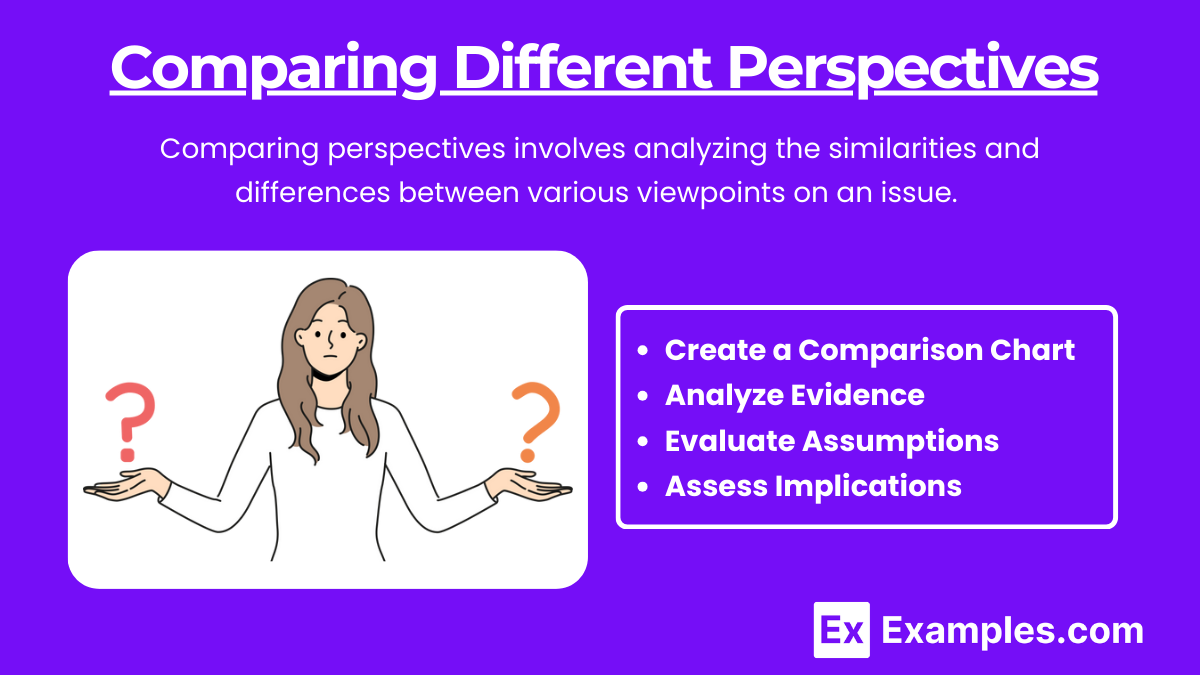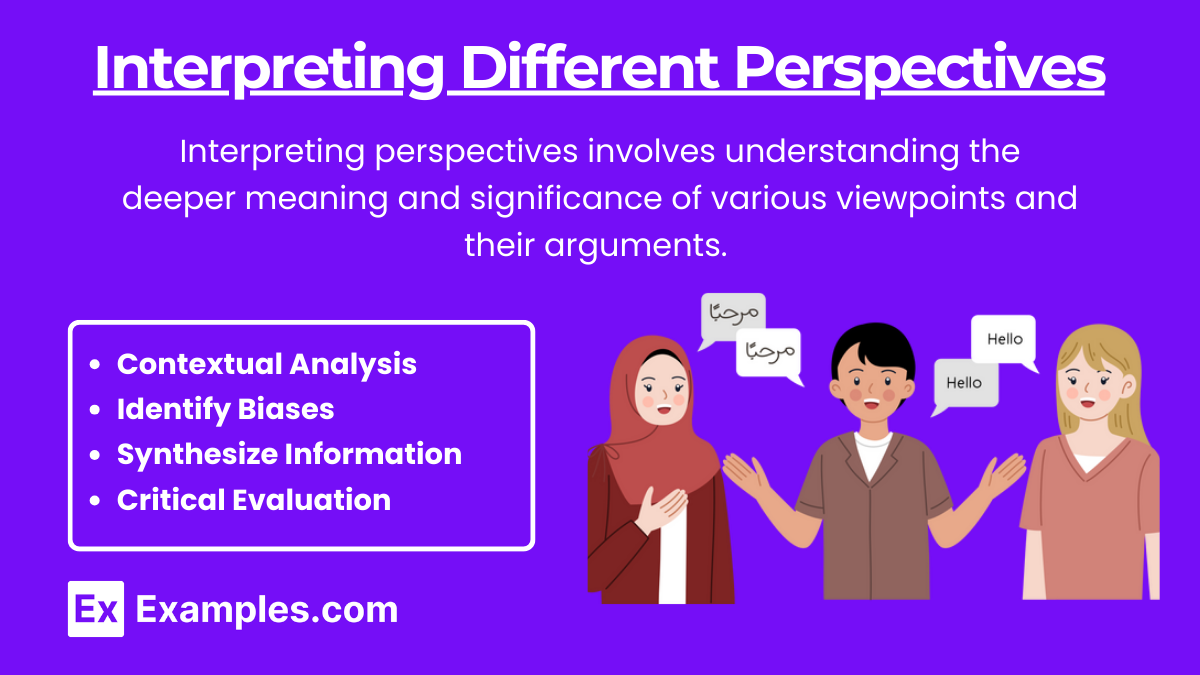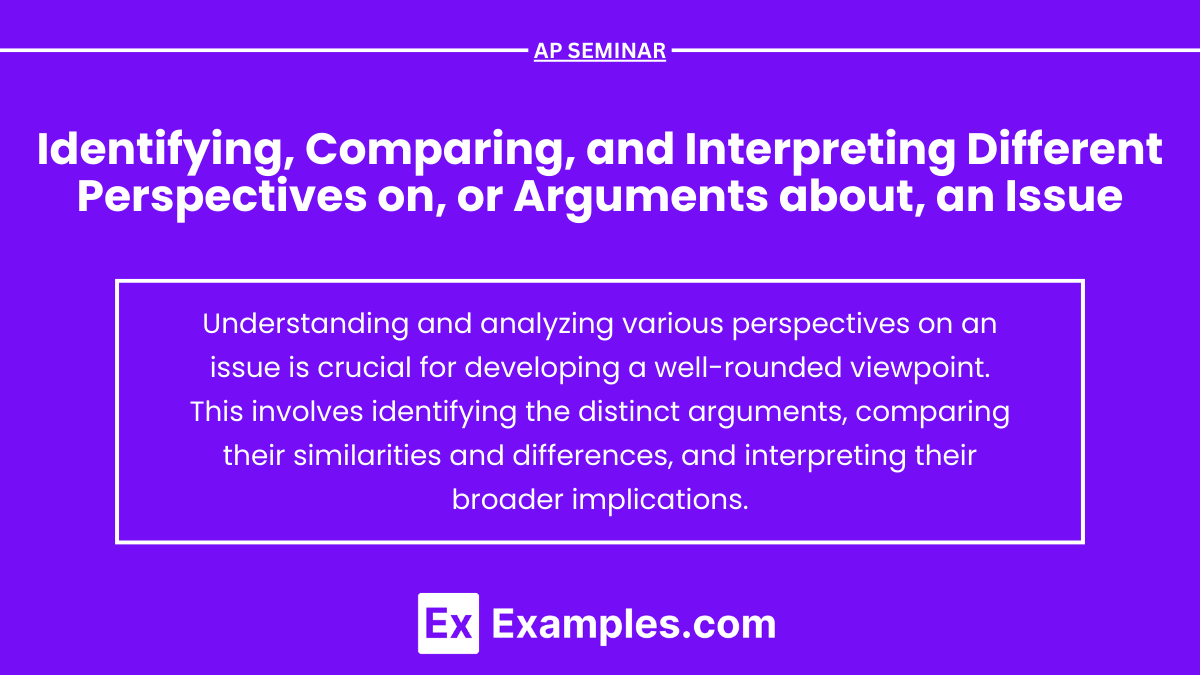Understanding and analyzing various perspectives on an issue is crucial for developing a well-rounded viewpoint. This involves identifying the distinct arguments, comparing their similarities and differences, and interpreting their broader implications. By examining the evidence, underlying assumptions, and contexts of different perspectives, one can gain a deeper comprehension of complex topics. This skill is essential for critical thinking and effective communication, particularly in academic and professional settings, where nuanced and informed analysis is highly valued.
Learning Objectives
In studying “Identifying, Comparing, and Interpreting Different Perspectives on, or Arguments about, an Issue” for the AP Seminar exam, you should aim to develop several key skills. Learn to identify and articulate various perspectives, understand the underlying assumptions and contexts, and critically evaluate the evidence supporting each viewpoint. Focus on comparing perspectives to highlight similarities and differences, and practice interpreting the broader implications of these perspectives. Additionally, enhance your ability to construct well-supported arguments and present nuanced analyses in both written and oral formats. These skills are essential for crafting compelling, evidence-based arguments and for excelling in academic discussions.
Steps to Identifying Perspectives

Identifying different perspectives means recognizing the distinct viewpoints, arguments, or opinions presented about a particular issue. It involves understanding that each perspective is shaped by the individual’s or group’s background, experiences, beliefs, and values. This process requires a careful examination of the language, tone, and style used by the author, as well as the context in which the perspective was formed.
Steps to Identify Perspectives:
- Research Broadly: Use diverse sources such as academic journals, news articles, opinion pieces, and books to gather a wide range of perspectives.
- Note Authors and Stakeholders: Identify who is presenting the viewpoint. Consider their background, expertise, and potential biases.
- Understand Context: Recognize the historical, cultural, and social context in which the perspective is formed.
- Highlight Key Arguments: Summarize the main points and claims made by each perspective.
Example: When examining climate change, perspectives might include:
- Scientific: Climate scientists presenting data on global warming.
- Economic: Economists discussing the financial impact of environmental policies.
- Political: Politicians debating regulations and policy measures.
- Social: Activists and community leaders addressing environmental justice.
Comparing Different Perspectives

Comparing perspectives involves analyzing the similarities and differences between various viewpoints on an issue. This process requires a detailed examination of each perspective’s main arguments, the evidence provided, the underlying assumptions, and the context in which the viewpoint was formed. By systematically comparing perspectives, you can uncover the strengths and weaknesses of each argument, identify common ground, and understand the factors that lead to differing conclusions.
Steps to Compare Perspectives:
- Create a Comparison Chart: Organize the perspectives in a table or chart for a clear visual comparison.
| Perspective | Key Arguments | Evidence Used | Implications |
|---|---|---|---|
| Scientific | Global temperatures are rising | Climate data, models, research studies | Need for urgent action to reduce emissions |
| Economic | Costs of environmental regulations are high | Economic analyses, industry reports | Balancing economic growth with sustainability |
| Political | Policy changes needed to address climate | Legislative proposals, policy reviews | Varied approaches based on political ideologies |
| Social | Impact on marginalized communities | Case studies, activist reports | Focus on environmental justice |
- Analyze Evidence: Look at the type and quality of evidence each perspective uses.
- Evaluate Assumptions: Identify the underlying assumptions behind each viewpoint.
- Assess Implications: Consider the broader implications and consequences of each perspective.
Example: In comparing perspectives on climate change:
- Scientific Perspective: Focuses on empirical data and the urgent need for action based on global temperature trends.
- Economic Perspective: Weighs the cost of regulations against the benefits, emphasizing a balance between economic growth and sustainability.
- Political Perspective: Highlights differing policy approaches, influenced by political ideology and public opinion.
- Social Perspective: Stresses the disproportionate impact on marginalized communities and the need for equitable solutions.
Interpreting Different Perspectives

Interpreting perspectives involves understanding the deeper meaning and significance of various viewpoints and their arguments. This process includes analyzing the evidence presented, recognizing the underlying assumptions and biases, and considering the broader context in which these perspectives are formed. Interpretation goes beyond surface-level understanding by exploring the implications and consequences of adopting a particular viewpoint.
Steps to Interpret Perspectives:
- Contextual Analysis: Consider the broader historical, social, and cultural context of each perspective.
- Identify Biases: Recognize any potential biases and how they influence the arguments presented.
- Synthesize Information: Combine insights from different perspectives to gain a holistic understanding of the issue.
- Critical Evaluation: Critically assess the strengths and weaknesses of each perspective.
Example: When interpreting perspectives on climate change:
- Scientific Perspective: Provides a data-driven basis for understanding climate trends and informing policy.
- Economic Perspective: Highlights the need to consider financial implications and the feasibility of proposed solutions.
- Political Perspective: Reflects the influence of political ideologies and public opinion on policy-making.
- Social Perspective: Emphasizes the importance of addressing social justice issues in climate action plans.


